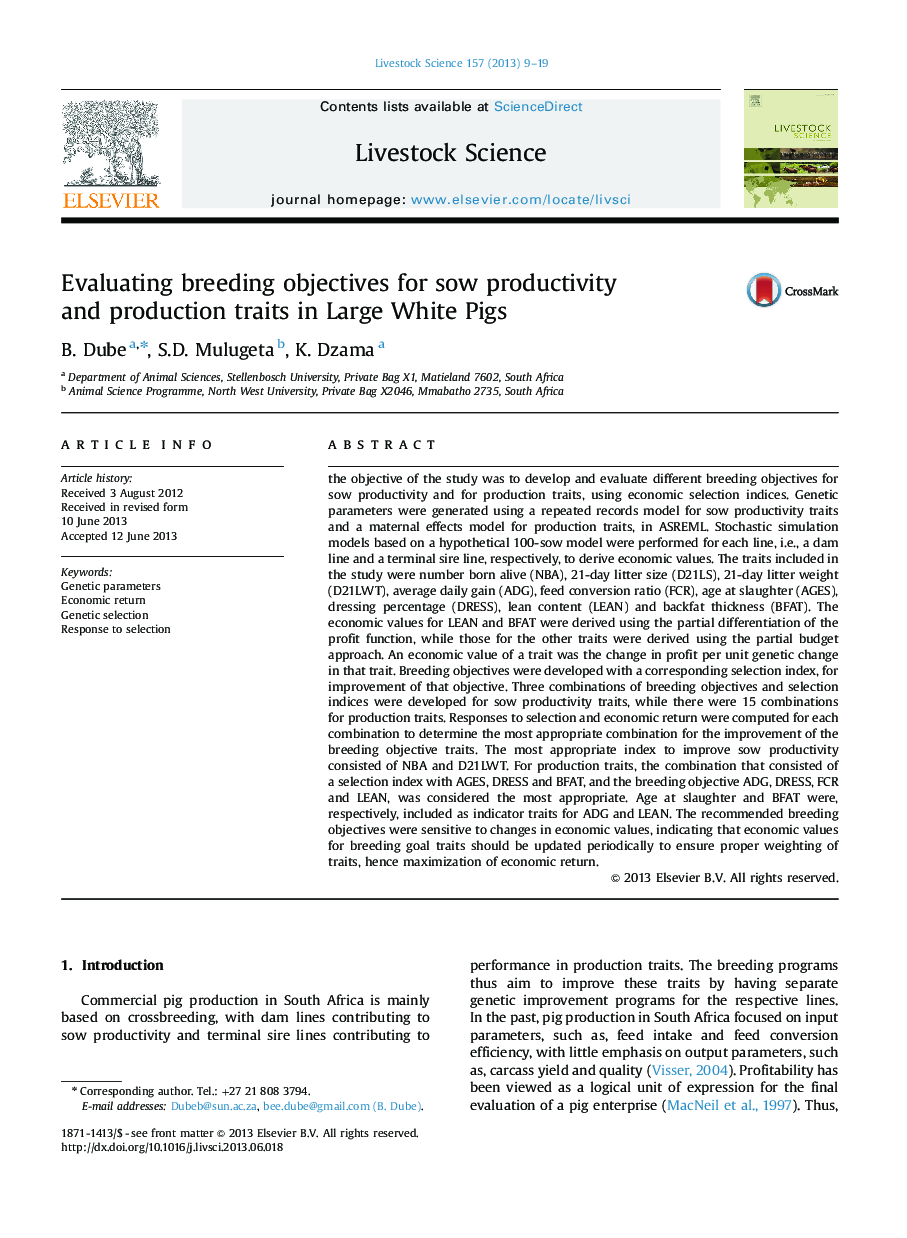| کد مقاله | کد نشریه | سال انتشار | مقاله انگلیسی | نسخه تمام متن |
|---|---|---|---|---|
| 5790342 | 1109492 | 2013 | 11 صفحه PDF | دانلود رایگان |
the objective of the study was to develop and evaluate different breeding objectives for sow productivity and for production traits, using economic selection indices. Genetic parameters were generated using a repeated records model for sow productivity traits and a maternal effects model for production traits, in ASREML. Stochastic simulation models based on a hypothetical 100-sow model were performed for each line, i.e., a dam line and a terminal sire line, respectively, to derive economic values. The traits included in the study were number born alive (NBA), 21-day litter size (D21LS), 21-day litter weight (D21LWT), average daily gain (ADG), feed conversion ratio (FCR), age at slaughter (AGES), dressing percentage (DRESS), lean content (LEAN) and backfat thickness (BFAT). The economic values for LEAN and BFAT were derived using the partial differentiation of the profit function, while those for the other traits were derived using the partial budget approach. An economic value of a trait was the change in profit per unit genetic change in that trait. Breeding objectives were developed with a corresponding selection index, for improvement of that objective. Three combinations of breeding objectives and selection indices were developed for sow productivity traits, while there were 15 combinations for production traits. Responses to selection and economic return were computed for each combination to determine the most appropriate combination for the improvement of the breeding objective traits. The most appropriate index to improve sow productivity consisted of NBA and D21LWT. For production traits, the combination that consisted of a selection index with AGES, DRESS and BFAT, and the breeding objective ADG, DRESS, FCR and LEAN, was considered the most appropriate. Age at slaughter and BFAT were, respectively, included as indicator traits for ADG and LEAN. The recommended breeding objectives were sensitive to changes in economic values, indicating that economic values for breeding goal traits should be updated periodically to ensure proper weighting of traits, hence maximization of economic return.
Journal: Livestock Science - Volume 157, Issue 1, October 2013, Pages 9-19
